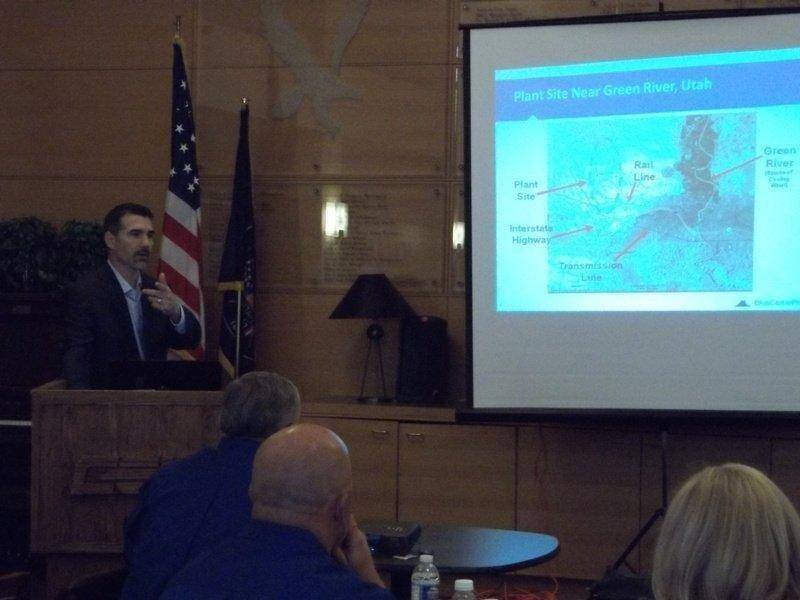Representatives of Blue Castle Holdings, an energy infrastructure development company developing plans and working on licensing for a two-unit nuclear power plant near Green River presented their arguments in favor of nuclear power in two meetings last week.
The meetings, held at Utah State University-College of Eastern Utah, provided community leaders and citizens an opportunity to hear from BHC Management, including: President and CEO, Aaron Tilton; Chief Operating Officer, Thomas Retson; Senior Vice President of Business Development, Reed Searle; and Chief Strategic Officer and former Chairman of the U.S. Nuclear Regulatory Commission, Nils Diaz.
The BCH representatives addressed many of the concerns locals have about the plans for the Green River facility. One of the obvious concerns in such a dry climate is water. The CEO explained that the water that would be used by such a plant would be “similar” to coal fire plants, and would “increase Utah’s electrical generation by 50 percent by using less than one percent of the state’s water.”
He disputed some of the claims offered by opponents of the plant that water will be a concern in the development and operation of the plant.В In the presentation, he revealed the water they were leasing had already been approved “by Utah’s State Water Engineer for use in coal fire power plants that were not constructed.”
Tilton also stressed the benefit of the as many as 1,000 new jobs the plant would provide. HeВ said that it is the company’s “hope that most of these jobs come from this area”, and that one of the reasons the company selected the Green River siteВ is that there is “already a significantly trained work force in the area.”
Currently, the company supports 100 employees, which Tilton explained will growВ to near 4,000 at the peak of construction, and settle to between 825 and 1000 when the plant is in operation.
Searle, a formerВ General Manager of the Intermountain Power Agency, which owns a 1950 megawatt coal fired electric generating station near Delta explained that BHC is also “carefully planning to meet the needs of new workers”, while bearing in mind the needs of the existing community. He believes that such consideration is important, especially given that, as he said, “This project is biggerВ than all the coal fire plants [in the area] put together.”
The company’s representatives also addressed the subject of the limited life of nuclear plants. They explained that nuclear plants are expected to last a minimum of 40 years. They expect the plant planned for Green River would last at least 60, and up to 80, years. Tilton called nuclear plans a “long-lived asset”.
As to what would happen after that time, Retson explained that much of the expansion which happens at nuclear plants, is being done at already existing plants. “It’s highly likely once you’ve built those existing plants,” he said, “that’s where expansion will be.”
Diaz spent much time describing the events at the Fukushima Daiichi plant in Japan. For more on his description, and an explanation on the safety of U.S. nuclear plants, check etv10news.com tomorrow.

